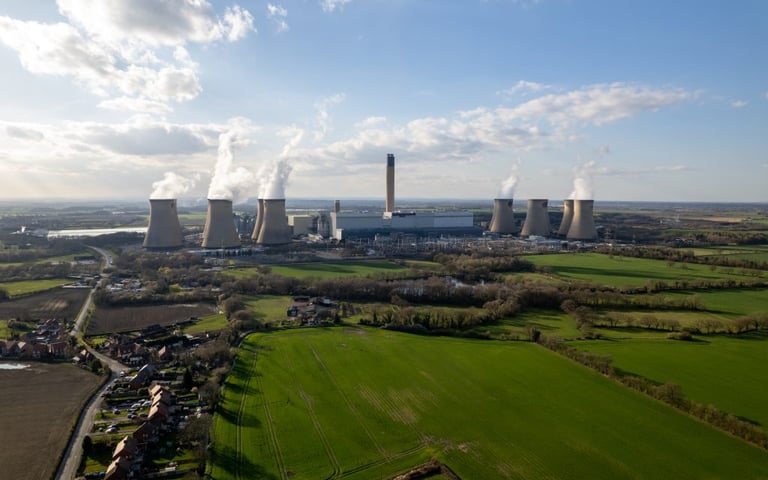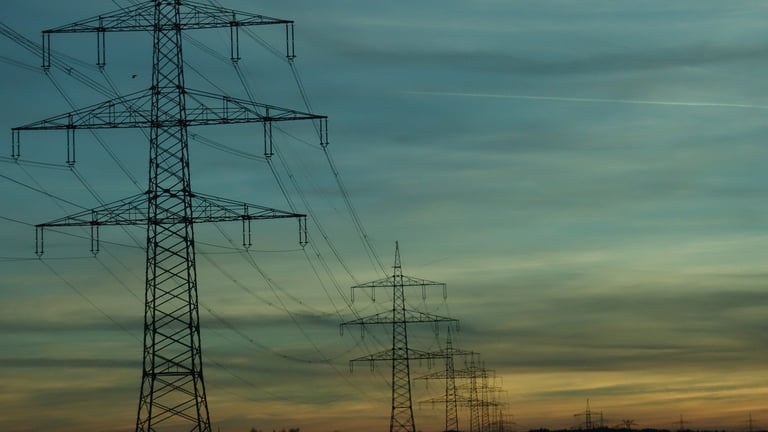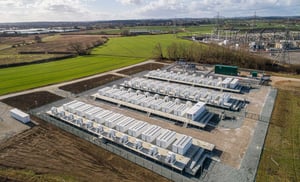Investors looking for stability in the clean energy transition should take a closer look at Drax Power Station’s new role under a low-carbon dispatchable CfD. Backed by detailed analysis from Baringa, Drax isn’t just complementing wind and solar – it’s actively reshaping the economics of the UK’s energy future, unlocking multi-billion pound savings and slashing emissions without compromising reliability.
Between 2027 and 2031, Drax Power Station is poised to deliver substantial savings of between £1.6 billion and £3.1 billion to the UK energy system. These cost reductions, highlighted in Baringa’s recent analysis, stem from Drax operating under a new low-carbon dispatchable Contract for Difference (CfD), which allows the power station to respond flexibly to fluctuating supply and demand on the grid. This isn’t theoretical, it’s a pragmatic move to keep energy reliable, affordable, and clean during the country’s critical shift to renewables.
The UK’s growing reliance on intermittent renewables like wind and solar presents a clear challenge: what happens when the sun doesn’t shine and the wind doesn’t blow? Drax steps in during these weather-dependent lulls, providing 2.6GW of clean, dispatchable capacity, the largest of any single source in the UK. This role is vital, not just for grid stability, but for keeping the system leaner and more cost-effective.
This flexibility directly reduces the need for costly ‘standby’ capacity, which the Government procures through the capacity market to ensure there’s always backup power available. Without Drax, the Government would need to spend significantly more to maintain energy security. Baringa’s data shows that with Drax in the mix, the UK can save between £640 million and £1 billion in capacity market payments over just four years.
It’s not only about capacity – it’s also about price. On cold, overcast days, when wind and solar falter, the UK currently leans heavily on imported electricity and gas-fired generation. Both are expensive, particularly during high-demand periods. In January, for example, energy prices soared to £2,900/MWh — 40 times the average — when poor weather conditions triggered a spike in demand and a drop in renewable output.
Drax’s contribution during these moments reduces the country’s reliance on imports and gas. According to Baringa’s modelling, Drax could cut gas usage by around 4.3% and reduce electricity imports by nearly 4.9%. This shift alone would lower wholesale energy prices, saving approximately £1.8 billion between 2027 and 2031 – and potentially more if gas prices rise beyond expectations.
The environmental impact is equally compelling. By displacing fossil fuels, Drax will eliminate roughly 4 million tonnes of CO₂ over the CfD’s four-year span — the equivalent of removing 1.5 million petrol or diesel vehicles from UK roads. This represents a 5% cut in the power sector’s overall emissions and delivers meaningful progress toward the UK’s climate targets.
The structure of the low-carbon dispatchable CfD recognises the unique value of Drax’s flexible biomass generation. Unlike nuclear, which operates at a constant output, Drax can ramp production up or down based on real-time needs — making it an indispensable partner in a renewables-led system. As wind and solar become dominant by 2030, such adaptability becomes even more critical.
Looking beyond 2031, the future potential of Drax becomes even more significant. The site is well-positioned to incorporate BECCS (bioenergy with carbon capture and storage), which would transform it into the world’s largest carbon removal facility. This could offer long-term savings of up to £15 billion and position the UK as a global leader in negative emissions technology — a key tool in achieving net zero.
Drax Power Station is not merely a transitional asset; it’s a strategic cornerstone for a resilient, low-carbon future. Its unique ability to balance the grid, lower costs, and reduce emissions places it at the heart of the UK’s clean energy plan.
Drax Group plc (LON:DRX), trading as Drax, is a power generation business. The principal downstream enterprises are based in the UK and include Drax Power Limited, which runs the biomass fuelled Drax power station, near Selby in North Yorkshire.









































